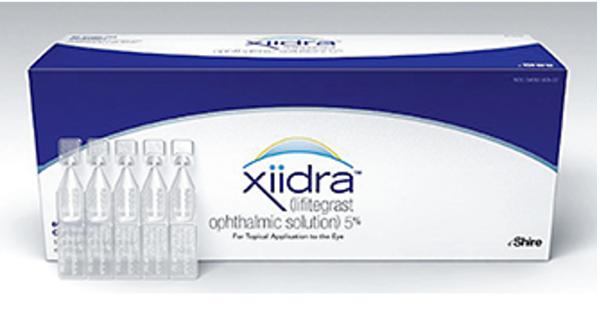Lifitegrast Ophthalmic Dosage
Medically reviewed by Drugs.com. Last updated on Sep 12, 2024.
Applies to the following strengths: 5%
Usual Adult Dose for:
Usual Pediatric Dose for:
Additional dosage information:
Usual Adult Dose for Eye Dryness/Redness
5% ophthalmic solution: 1 drop instilled into each eye 2 times a day
Comments:
- Doses should be separated by approximately 12 hours.
- The single-use container may be used to instill 1 drop in both eyes, but should be discarded immediately after use.
- Contacts should be removed before administration, and may be reinserted after 15 minutes.
Use: Treatment of the signs/symptoms of dry eye disease (DED)
Usual Pediatric Dose for Eye Dryness/Redness
17 years and older:
5% ophthalmic solution: 1 drop instilled into each eye 2 times a day
Comments:
- Doses should be separated by approximately 12 hours.
- The single-use container may be used to instill 1 drop in both eyes, but should be discarded immediately after use.
- Contacts should be removed before administration, and may be reinserted after 15 minutes.
Use: Treatment of the signs/symptoms of DED
Renal Dose Adjustments
Data not available
Liver Dose Adjustments
Data not available
Precautions
CONTRAINDICATIONS:
- Hypersensitivity to the active component or to any of the ingredients
Safety and efficacy have not been established in patients younger than 17 years.
Consult WARNINGS section for additional precautions.
Dialysis
Data not available
Other Comments
Administration advice:
- Patients should open the vial immediately before administering the dose.
- During administration, patients should avoid touching tip of the single-use vial to the eye or any surface.
- After use, the vial should be discarded immediately. The remaining contents of the vial should not be saved.
Storage requirements:
- The manufacturer product information should be consulted.
Patient advice:
- Patients should be instructed to avoid touching the vial tip to the eye or other surfaces.
- Patients who wear contact lenses should remove contact lenses before administration; the lenses may be reinserted at least 15 minutes after administration.
- Inform patients that this drug may cause blurred vision, and they should avoid driving or operating machinery if these side effects occur.
- Patients should be advised to speak to their healthcare provider if they become pregnant, intend to become pregnant, or are breastfeeding.
Frequently asked questions
- What are the best eye drops for dry eyes?
- How much is Xiidra without insurance?
- How is Xiidra packaged at the pharmacy?
- How does Xiidra differ from OTC dry eye treatments?
- Can I use other eye drops with Xiidra?
- How long does it take for Xiidra to work?
More about lifitegrast ophthalmic
- Compare alternatives
- Reviews (462)
- Side effects
- During pregnancy
- Drug class: ophthalmic anti-inflammatory agents
- Breastfeeding
- En español
Patient resources
Other brands
Professional resources
Other brands
Related treatment guides
See also:
Further information
Always consult your healthcare provider to ensure the information displayed on this page applies to your personal circumstances.


